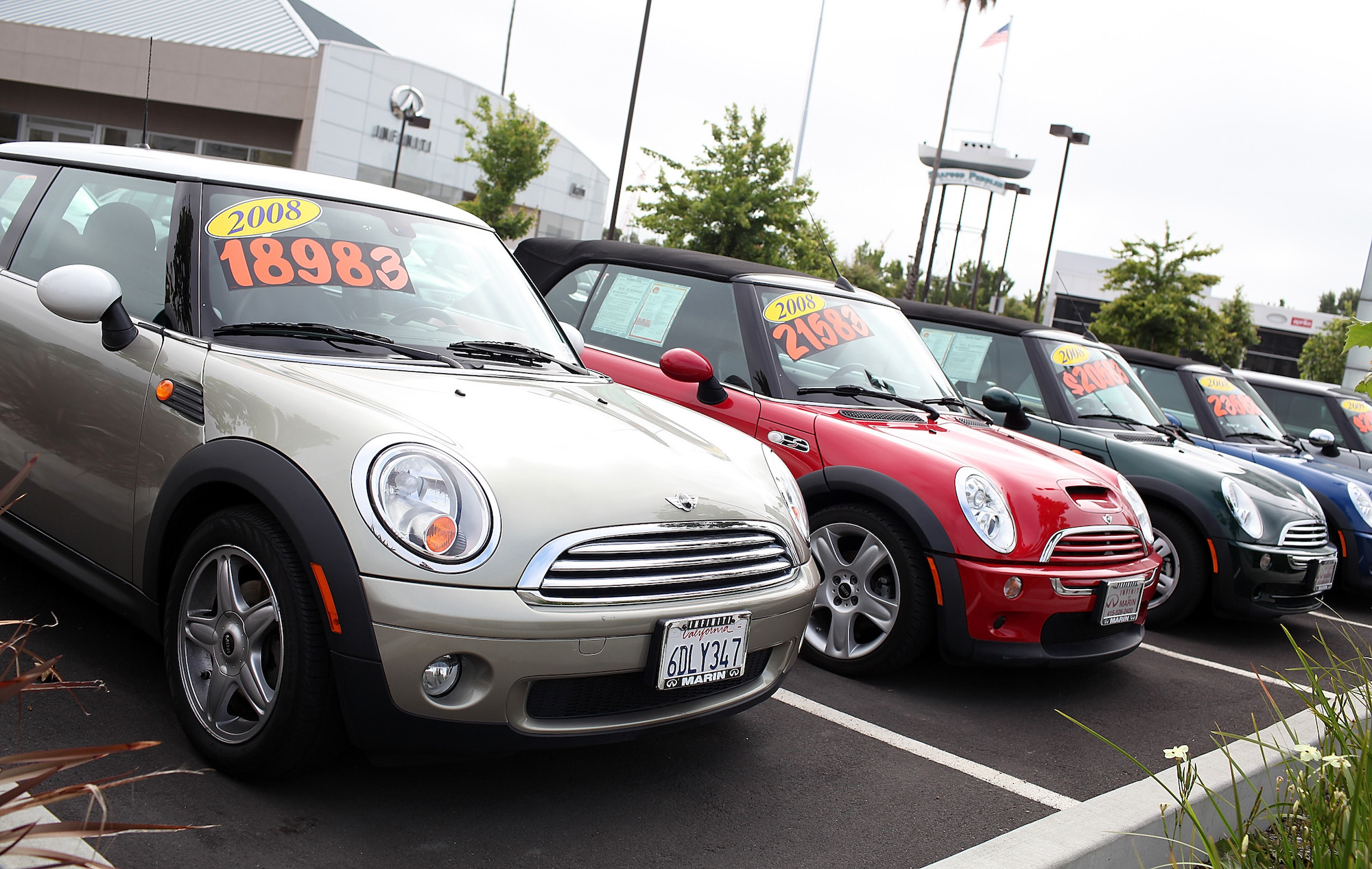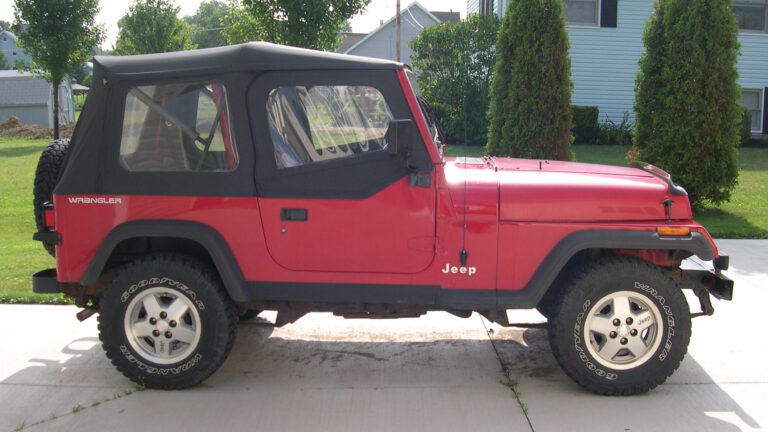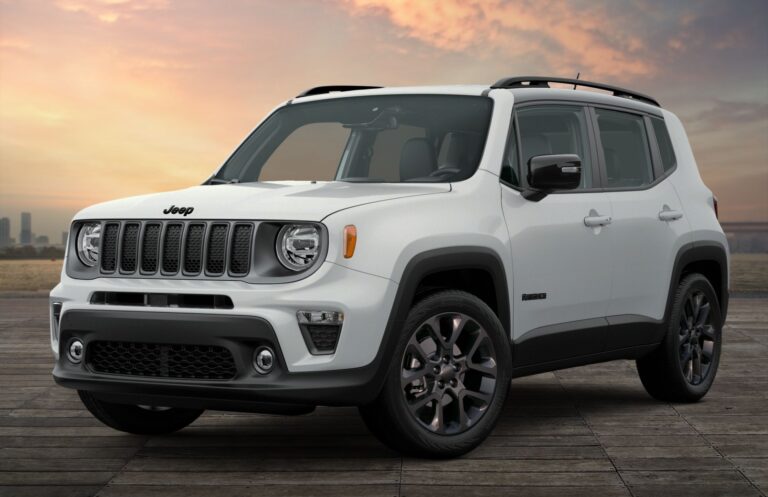Used Jeep Nitro For Sale: Your Comprehensive Guide to Finding the Right Ride
Used Jeep Nitro For Sale: Your Comprehensive Guide to Finding the Right Ride jeeps.truckstrend.com
The automotive market is vast and varied, offering a plethora of options for every taste and budget. Among the myriad of used vehicles, the Jeep Nitro stands out as a compact SUV with a distinctive personality. Produced for a relatively short span from 2007 to 2012, the Nitro broke away from traditional Jeep aesthetics, offering a more aggressive, boxy, and urban-oriented design. While it might not possess the legendary off-road prowess of a Wrangler, a used Jeep Nitro for sale can be an incredibly appealing option for buyers seeking a unique blend of style, practicality, and affordability in the used SUV segment. This guide will delve deep into everything you need to know about purchasing a pre-owned Jeep Nitro, from its key features and potential pitfalls to what to look for and how to secure the best deal.
Why Consider a Used Jeep Nitro? – The Allure of the Distinctive SUV
Used Jeep Nitro For Sale: Your Comprehensive Guide to Finding the Right Ride
In a sea of increasingly similar crossover designs, the Jeep Nitro offers a refreshing dose of individuality. Its bold, squared-off lines and prominent grille set it apart, making it instantly recognizable. But beyond its unique aesthetics, there are several compelling reasons why a used Jeep Nitro might be the perfect fit for your needs:
- Unique Styling: If you’re tired of bland, cookie-cutter SUVs, the Nitro’s rugged, almost concept-car-like appearance offers a refreshing alternative. It’s a statement vehicle that retains a strong road presence.
- Affordability: As a discontinued model, the Jeep Nitro has experienced significant depreciation, making it an incredibly budget-friendly option in the used car market. You can often find well-maintained examples at a fraction of their original MSRP.
- Practicality and Utility: Despite its compact footprint, the Nitro offers a surprisingly versatile interior. Its rear seats fold flat, and many models feature the innovative "Load ‘N Go" sliding cargo floor, which extends out for easier loading and unloading of heavy or bulky items. This makes it suitable for hauling gear, groceries, or even smaller furniture pieces.
- Engine Options for Performance: Unlike some competitors that offered only four-cylinder engines, the Nitro came standard with a V6, providing ample power for daily driving and highway merging. The available 4.0L V6 in the R/T trim offered even more spirited performance.
- Available 4×4 Capability: For those living in areas with inclement weather or who occasionally venture onto unpaved roads, the optional part-time 4×4 system provides added traction and confidence, extending its utility beyond pure urban driving.

For buyers seeking a characterful, affordable, and practical SUV that stands out from the crowd, a used Jeep Nitro presents a compelling proposition.
Key Features and Specifications Across Model Years (2007-2012)
Understanding the different configurations and features available across the Nitro’s production run is crucial for making an informed purchase decision.
Trim Levels:
The Jeep Nitro was offered in various trim levels throughout its lifecycle, typically including:
- SXT (Base): Generally came with standard features like power windows/locks, air conditioning, and steel wheels.
- SLT (Mid-Range): Added features such as alloy wheels, upgraded cloth upholstery, power driver’s seat, cruise control, and sometimes the "Load ‘N Go" cargo floor.
- R/T (Sport/Top-Tier): The performance-oriented trim, featuring the more powerful 4.0L V6 engine, sport-tuned suspension, larger wheels, and premium interior appointments.
- SE, Detonator, Shock: Later model years introduced variations like the SE (often a simpler base model) and the Detonator and Shock trims, which usually included unique exterior accents, upgraded interiors, and a higher level of standard equipment.
Engine Options:
- 3.7L SOHC V6: This engine, shared with other Jeep and Dodge models, was the standard powerplant for most Nitro trims. It produced approximately 210 horsepower and 235 lb-ft of torque, paired primarily with a 4-speed automatic transmission. It offered adequate power for daily driving.
- 4.0L SOHC V6: Exclusive to the R/T and later high-tier trims, this larger V6 delivered a more robust 260 horsepower and 265 lb-ft of torque. It was mated to a more refined 5-speed automatic transmission, providing a noticeable boost in acceleration and responsiveness.
Drivetrain:
Most Used Jeep Nitro models for sale will be available with either:
- Rear-Wheel Drive (RWD): Standard on all trims, offering traditional SUV handling.
- Part-Time Four-Wheel Drive (4WD): An optional system suitable for light off-road use and improved traction in slippery conditions. It’s not a full-time AWD system, meaning it should not be used on dry pavement.
Interior and Technology:
The Nitro’s interior is functional and straightforward, reflecting its rugged exterior. Early models featured more hard plastics, while later years saw some improvements in material quality. Key interior features to look for include:
- "Load ‘N Go" Sliding Cargo Floor: A highly practical feature on many SLT and R/T models, allowing the rear cargo floor to slide out by 18 inches for easier access.
- UConnect Infotainment (MyGIG): Higher trims might include Chrysler’s MyGIG infotainment system, offering a touchscreen, navigation, and a hard drive for music storage (though dated by modern standards, it was advanced for its time).
- Comfort Features: Available heated seats, power-adjustable driver’s seat, and steering wheel-mounted audio controls enhance comfort and convenience.
Safety Features:
Standard safety features typically included anti-lock brakes (ABS), electronic stability control (ESC), and traction control. Side curtain airbags were also standard or widely available, especially in later model years, contributing to its safety ratings.
What to Look For When Buying a Used Jeep Nitro – A Pre-Purchase Checklist
Purchasing any used vehicle requires diligence, and the Jeep Nitro is no exception. A thorough inspection and careful consideration can save you from costly surprises down the road.
1. Comprehensive Mechanical Inspection:
- Engine: Listen for any unusual noises (knocks, ticks, excessive whining). Check for oil leaks around the valve covers, oil pan, and timing cover. Ensure the engine starts easily and idles smoothly. For the 3.7L, while less common, some owners have reported head gasket issues, so look for milky oil or excessive white smoke from the exhaust.
- Transmission: During the test drive, pay attention to shifts. They should be smooth and consistent, without any jerking, slipping, or delayed engagement. Check the transmission fluid level and color (should be reddish, not dark or burnt-smelling).
- Suspension: Drive over bumps and uneven surfaces. Listen for clunks, squeaks, or rattles, which could indicate worn ball joints, tie rod ends, or control arm bushings – common wear items on the Nitro. Check for excessive bounciness or leaning in turns.
- Brakes: Test the brakes at various speeds. The pedal should feel firm, not spongy, and the vehicle should stop in a straight line without pulling. Listen for grinding or squealing noises.
- Tires: Inspect tire wear. Uneven wear can indicate alignment issues or worn suspension components. Check tread depth.
- Fluid Leaks: Look under the vehicle for any signs of fluid leaks (oil, coolant, transmission fluid, power steering fluid).
2. Electrical Systems Check:
- Test all lights (headlights, tail lights, turn signals, brake lights, interior lights).
- Operate all power windows, door locks, and side mirrors.
- Test the air conditioning and heating system at all fan speeds.
- Verify the functionality of the radio, infotainment system, and all dashboard warning lights (ensure they illuminate upon startup and then turn off).
- Check the functionality of the cruise control and any auxiliary power outlets.
3. Body and Frame Condition:
- Inspect for rust, especially around wheel wells, rocker panels, and the undercarriage.
- Look for signs of accident damage: inconsistent panel gaps, mismatched paint colors, overspray, or rippling in the frame rails.
- Check the condition of the exterior trim, bumpers, and lights for cracks or damage.
4. Interior Condition:
- Examine the seats for rips, tears, or excessive wear.
- Check the dashboard and door panels for cracks, fading, or loose components.
- Ensure all buttons, knobs, and switches operate correctly.
- Test the "Load ‘N Go" floor if equipped – it should slide smoothly.
- Check for any persistent odors (smoke, mold, pet odors).
5. Documentation and History:
- Vehicle History Report (CarFax/AutoCheck): This is non-negotiable. It will reveal accident history, previous owners, service records, odometer discrepancies, and any salvage or flood titles.
- Service Records: Ask the seller for maintenance records. A well-documented service history indicates a responsible owner.
- Ensure the title is clear and matches the VIN on the vehicle.
6. The Test Drive:
This is your most important tool. Drive the Nitro on various road conditions – city streets, highways, and some bumpy roads if possible.
- Listen for any unusual noises from the engine, transmission, suspension, or brakes.
- Feel for vibrations, pulls, or steering looseness.
- Test acceleration and braking performance.
- Observe how the vehicle handles turns and maintains stability.
- Pay attention to how the transmission shifts at different speeds.
Finally, and perhaps most importantly, always get a pre-purchase inspection (PPI) by an independent, trusted mechanic who specializes in American vehicles, or even better, Jeeps. They can identify issues you might miss.
Common Issues and Maintenance Tips for the Jeep Nitro
Like any vehicle, the Jeep Nitro has its known quirks and common wear items. Being aware of these can help you budget for potential repairs and maintain your used Nitro effectively.
Known Issues:
- Front Suspension Components: Due to its weight and design, components like ball joints, tie rods, and control arm bushings can wear out, leading to clunking noises or loose steering.
- TPMS Sensors: The Tire Pressure Monitoring System (TPMS) sensors are known to fail on some models, leading to a persistent warning light. Replacement can be costly.
- Electrical Glitches: Some owners have reported minor electrical gremlins, such as faulty window switches, sensor malfunctions, or issues with the infotainment system.
- Brake Wear: The Nitro can be somewhat heavy on its brakes, so regular inspection and replacement of pads and rotors are common maintenance items.
- Fuel Economy: Neither the 3.7L nor the 4.0L engine is particularly fuel-efficient, especially compared to modern crossovers. Expect combined MPG in the high teens to low twenties.
Maintenance Advice:
- Regular Oil Changes: Stick to the manufacturer’s recommended oil change intervals, ideally using synthetic or synthetic blend oil, especially for the V6 engines.
- Fluid Checks: Regularly check and maintain proper levels of all fluids, including transmission fluid, coolant, brake fluid, and power steering fluid.
- Tire Rotation and Alignment: Rotate tires every 5,000-7,500 miles and get alignments checked annually to ensure even tire wear and proper handling.
- Brake Inspections: Have your brakes inspected with every oil change. Replace pads and rotors as needed to maintain stopping power.
- Suspension Component Checks: During routine service, ask your mechanic to inspect suspension components for wear, addressing issues proactively before they worsen.
- Address Warning Lights: Don’t ignore dashboard warning lights. Get them diagnosed promptly to prevent minor issues from becoming major repairs.
By staying on top of routine maintenance and being aware of common issues, you can significantly extend the lifespan and reliability of your used Jeep Nitro.
Pricing Your Used Jeep Nitro – What to Expect
The price of a used Jeep Nitro for sale can vary significantly based on several factors. Understanding these will help you negotiate and ensure you’re getting a fair deal.
Factors Influencing Price:
- Model Year: Newer models (2010-2012) will generally command higher prices than older ones (2007-2009).
- Trim Level: R/T models with the 4.0L engine and higher-end features will be more expensive than SXT or SE trims.
- Mileage: Lower mileage vehicles are typically more valuable. High mileage will significantly reduce the price.
- Condition: Excellent cosmetic and mechanical condition will warrant a higher price. Significant wear, damage, or deferred maintenance will lower it.
- Drivetrain: 4WD models often fetch slightly higher prices than 2WD variants, especially in regions where winter traction is a priority.
- Optional Features: Premium sound systems, navigation, sunroofs, and the "Load ‘N Go" floor can add value.
- Regional Market: Prices can vary based on demand and availability in your specific geographic area.
- Seller Type: Dealerships typically charge more due to overhead, reconditioning, and warranties, while private sellers often offer lower prices.
How to Research Prices:
Utilize online pricing guides like Kelley Blue Book (KBB.com), Edmunds.com, and NADAguides.com. Input the specific year, trim, mileage, and condition of the Nitro you’re considering to get a realistic price range for your local market. Compare these prices with similar listings on popular automotive websites like Autotrader, Cars.com, and local classifieds.
Used Jeep Nitro Estimated Price Table (Approximate Ranges)
| Model Year | Trim Level | Drivetrain | Condition (Good – Excellent) | Estimated Price Range (USD) | Notes |
|---|---|---|---|---|---|
| 2007 | SXT / SLT | 2WD / 4WD | 120,000 – 180,000+ miles | $3,000 – $6,000 | Entry-level, higher mileage expected. |
| 2007 | R/T | 2WD / 4WD | 100,000 – 160,000 miles | $4,000 – $7,500 | More powerful, may have more features. |
| 2008-2009 | SXT / SLT | 2WD / 4WD | 100,000 – 150,000 miles | $4,500 – $7,500 | Mid-range years, good value. |
| 2008-2009 | R/T | 2WD / 4WD | 90,000 – 140,000 miles | $5,500 – $8,500 | Still strong performance option. |
| 2010-2012 | SE / SXT | 2WD / 4WD | 70,000 – 120,000 miles | $6,000 – $9,000 | Newer, lower mileage, potentially better condition. |
| 2010-2012 | Detonator / Shock / R/T | 2WD / 4WD | 60,000 – 110,000 miles | $7,000 – $11,000+ | Top trims, best features, higher value. |
Note: Prices are highly variable and depend on specific vehicle condition, mileage, optional features, and local market demand. This table provides a general guideline.
Practical Advice and Actionable Insights
- Set a Realistic Budget: Factor in not just the purchase price, but also potential taxes, registration fees, insurance, and a buffer for immediate maintenance or repairs.
- Do Your Homework: Research specific model years and trims. Read owner reviews to understand common likes and dislikes.
- Get a Vehicle History Report (VHR): Never buy a used car without one. It’s your best defense against hidden problems.
- Always Test Drive: Drive the vehicle under various conditions to assess its performance, handling, and any potential issues.
- Insist on a Pre-Purchase Inspection (PPI): A trusted mechanic can uncover underlying mechanical issues that might not be apparent during a casual inspection. This small investment can save you thousands.
- Negotiate: Don’t be afraid to negotiate the price, especially if you’ve identified areas needing repair or if the asking price is above market value.
- Consider Insurance Costs: Get an insurance quote before buying, as premiums can vary significantly based on the vehicle, your driving history, and location.
Conclusion
The Used Jeep Nitro For Sale market offers a compelling opportunity for buyers looking for a distinctive, practical, and affordable compact SUV. Its bold styling, available V6 power, and useful features like the "Load ‘N Go" cargo floor make it a standout choice. While it’s essential to be aware of its common issues and conduct thorough pre-purchase inspections, a well-maintained Jeep Nitro can serve as a reliable and characterful daily driver. By following the advice in this guide, you can navigate the used market confidently, find a Nitro that fits your needs and budget, and enjoy the unique appeal of this often-overlooked Jeep.
Frequently Asked Questions (FAQ) about Used Jeep Nitro For Sale
Q1: Is the Jeep Nitro a reliable car?
A1: The Jeep Nitro is generally considered average in terms of reliability. While it’s not known for chronic catastrophic failures, it does have common wear items like suspension components and occasional electrical glitches. Regular maintenance and addressing issues promptly are key to its longevity.
Q2: What’s the difference between the 3.7L and 4.0L engines in the Nitro?
A2: The 3.7L V6 (210 hp) was the standard engine, offering adequate power for daily driving. The 4.0L V6 (260 hp), found in R/T and later high-tier trims, provides significantly more horsepower and torque, resulting in better acceleration and a sportier feel. The 4.0L is also typically paired with a 5-speed automatic transmission, while the 3.7L often uses a 4-speed.
Q3: Is the Nitro good off-road?
A3: The Jeep Nitro is equipped with an optional part-time 4×4 system, making it capable on light trails, dirt roads, and in snowy or icy conditions. However, it is not designed for serious off-roading like a Jeep Wrangler. Its independent front suspension and lower ground clearance limit its extreme terrain capabilities.
Q4: What’s the fuel economy like for a Used Jeep Nitro?
A4: Fuel economy is not the Nitro’s strong suit, especially compared to modern compact SUVs. The 3.7L V6 typically averages around 16-17 MPG city and 21-22 MPG highway. The more powerful 4.0L V6 is slightly less efficient, often in the 15-16 MPG city and 20-21 MPG highway range.
Q5: Are parts readily available for the Nitro since it’s discontinued?
A5: Yes, parts are generally readily available. The Nitro shares many mechanical components (engines, transmissions, suspension parts) with other Chrysler, Dodge, and Jeep models from the same era (e.g., Jeep Liberty, Dodge Dakota, Dodge Ram 1500). Aftermarket parts are also widely available.
Q6: What should I pay attention to during a test drive of a Used Jeep Nitro?
A6: During a test drive, listen for any unusual noises from the engine or suspension (clunks, squeaks). Feel for smooth transmission shifts and consistent braking. Check if the steering feels loose or pulls to one side. Test all electrical components, including windows, lights, and the AC/heater. Drive on different road surfaces to get a full feel for the vehicle’s condition.




